TRAVEL | Samboan's trio of heritage sites (South Cebu)
The Samboan church facade.
Samboan is arguably known best for its multiple waterfalls but this small town in South Cebu also has its share of well-preserved heritage structures from the Spanish colonial era. Three of them are clustered within short walking distance from each other, with the parish church as focal point.
St Michael the Archangel Church
Made primarily of coral stone, this 19th century church saw some restoration efforts in recent years after it was partially damaged by the 7.2-magnitude earthquake that struck the provinces of Cebu and Bohol back in October 2013.
As a result, the stones look new although it's encouraging to see moss growth in some spots already. This, along with the ferns and other plants sprouting from crevices in the church's facade, should help bring back the structure's old, weathered look soon. Just a few years ago, even the walls inside the church have moss growing on them. Now they're squeaky clean.
With patches of moss cover and other plants sprouting from crevices, this church may soon see its former old-world charm.
Though smaller in scale and lacking the grandeur of the Boljoon Church, Samboan's Saint Michael the Archangel Church is still one beautiful place of worship. I already noticed it before from photos but its side walls are curiously slanted upwards just a bit, something that's more evident when you step inside.
The retablo mayor, or main altar, eschews the majestic luster of dark hardwood and gold paint common in most old churches for white and a few basic colors. Here we see yellow, green, and brown over the altar's decorative moldings and carvings, affording it a different character altogether. I haven't fully seen the altar because it was covered entirely with a huge purple cloth for Lent. Yes, instead of covering only the images and statues as most parishes do, here they opted to cloak the entire retablo. It was epic.
The restoration efforts also saw the ceiling transform from a rigid A-type design to something curved, served with a fresh coat of white paint. Unlike Boljoon or the San Isidro Labrador Church in Lazi, Siquijor, the ceiling of this Samboan church didn't sport any paintings to begin with. It has always been plain white.
The color purple: seeing an entire altar covered in cloth was just epic.
The choir area above the church's main door.
The church is adjoined by a two-storey building that houses the parish rectory, a design that's fairly common in many colonial-era churches, especially in this part of the country. The church complex is fronted by a well-maintained park that extends all the way to edge of the hill, a spot where one can enjoy awesome views of the sea. The park boasts of a manicured lawn, sculpted plants, lamp posts, benches, fountains--the works. With public green spaces rapidly disappearing to give way to urbanization, Samboan is blessed to still have such a lovely park.
Campanario de Antigua
It translates to "ancient bell tower or belfry," and Samboan's Campanario de Antigua is indeed ancient, having been built in 1798 as a lookout for Moro raiders at the time. It's also quite impressive that this centuries-old watchtower is so well-preserved and still stands mighty and proud atop a plateau some 200 meters above sea level.
The Campanario de Antigua.
The bell tower is still in a very good condition for its age.
Escala de Jacob
Completing this town's trio of heritage sites is Escala de Jacob, or Jacob's Ladder. It's no ladder but a steep flight of manunggol stone stairs, with 147 steps in all that lead right at the foot of the Campanario de Antigua. It was built in 1878 to make it easier for coastal residents to go to church, and is still very much in use to this day.
A woman with an umbrella descending the Escala, proof that this stone staircase is still being used to this day.
A reminder of the historical significance of this flight of stairs.
*********************
GETTING THERE:
Coming from Cebu City, head to the South Bus Terminal to catch a bus bound for Bato via Barili (not via Oslob, which is on the opposite side of the island). Just tell the bus driver or conductor to let you off at Samboan. It's a 3-hour bus ride, more or less, and the fare is a little over Php 100. Once in town, you can get around with a tricycle.
If you happen to take the Bato via Oslob bus, you get off at Bato and take another bus bound for Cebu City via Barili (not the same bus route of course) or the ones headed for Moalboal or Badian. Get off at Samboan.
Or you can simply hire a van if you're willing to pay for convenience.
As for us, our base for this trip was Boljoon, and we made arrangements with Jaynet Ocean View Resort for a multi-town tour that included Samboan.
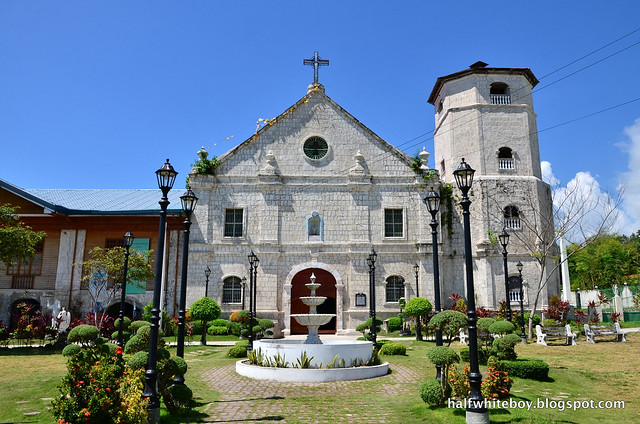
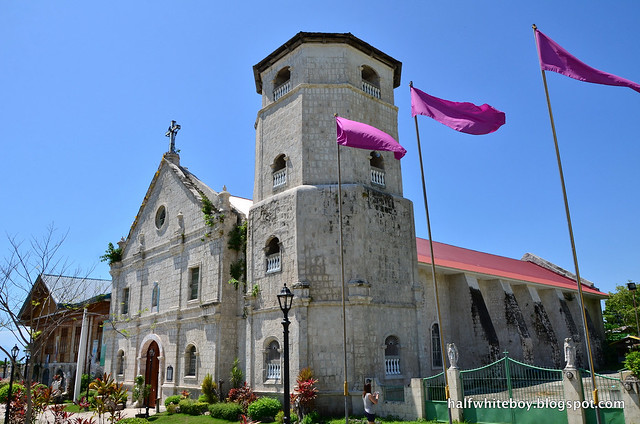
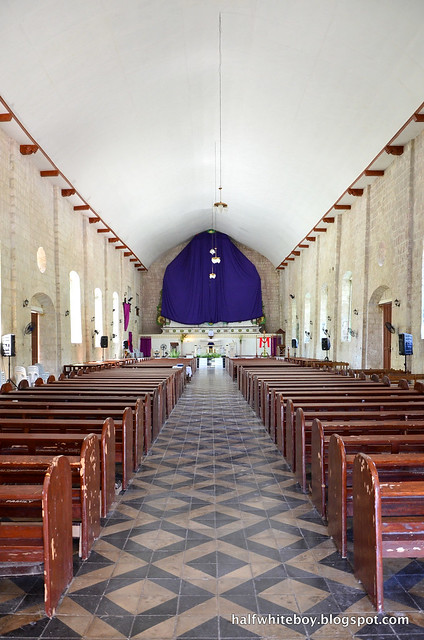
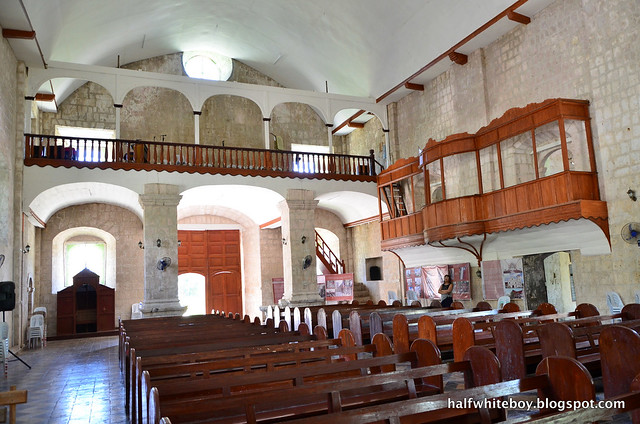
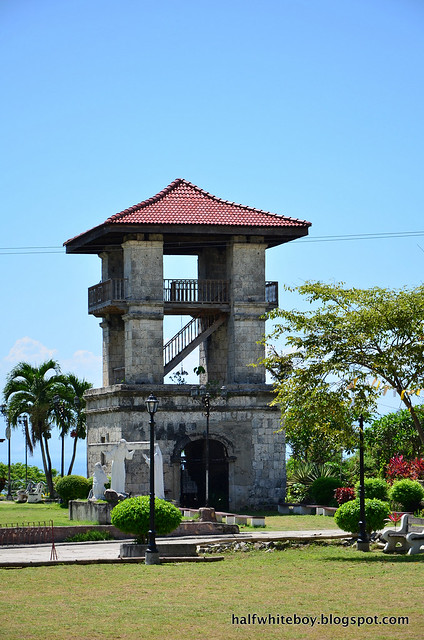
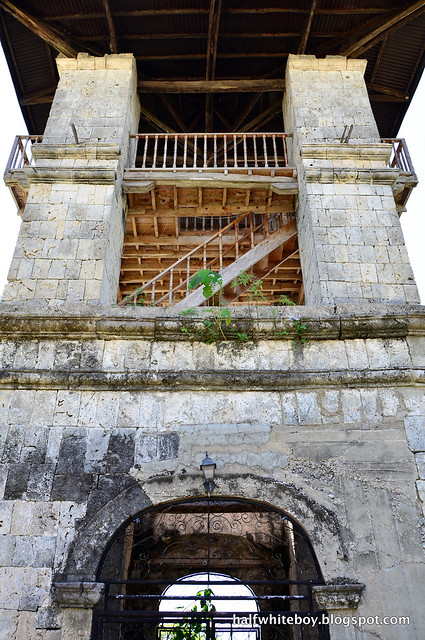
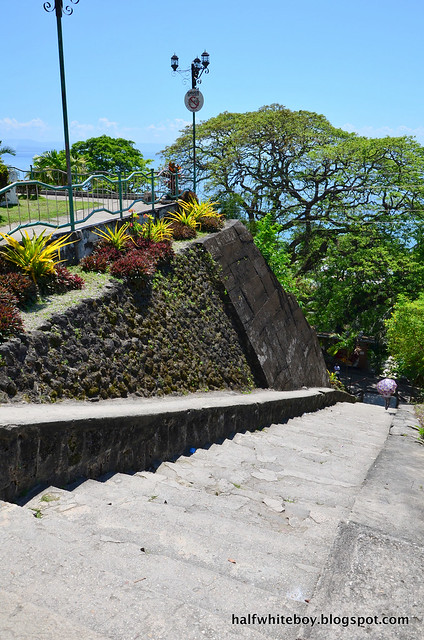
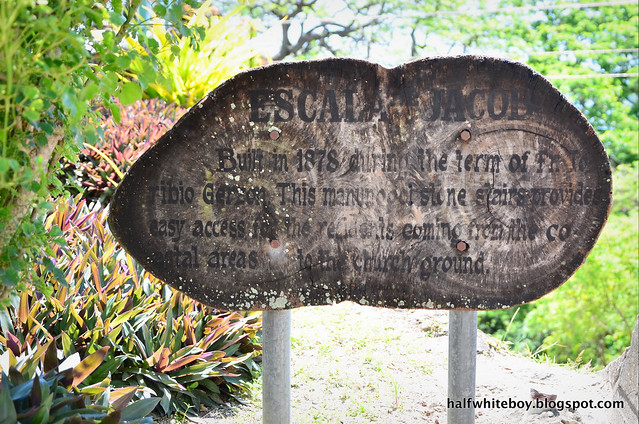
Comments
Post a Comment